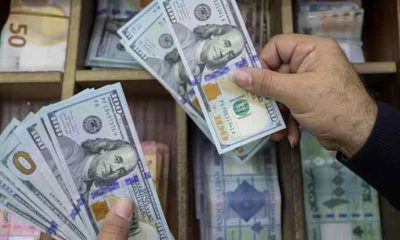Business
Slower China factory activity growth challenges economic recovery prospects

China’s manufacturing activity expanded at a slower pace in March, official data showed on Friday, raising doubts about the strength of a post-COVID factory recovery amid weaker global demand and a property market downturn.
The services sector was stronger, with activity expanding at the fastest pace in nearly 12 years after the end of China’s zero-COVID policy in December boosted transportation, accommodation and construction.
The official manufacturing purchasing managers’ index (PMI) stood at 51.9, against 52.6 in February, according to data from the National Bureau of Statistics (NBS), above the 50-point mark that separates expansion and contraction in activity on a monthly basis.
That slightly exceeded expectations of 51.5 tipped by economists in a Reuters poll, and led to the yuan strengthening against the dollar. The February figure had grown at the fastest pace in more than a decade.
China’s economic activity picked up in the first two months of 2023 as consumption and infrastructure investment drove a recovery after the end of COVID-19 disruptions and retail sales swung back to growth.
Nomura economists said the strong data suggested China’s economy had reached a “sweet spot” after the end of property tightening measures and the zero-COVID policy.
“However, amid rapidly worsening geopolitical tensions and financial concerns outside of China, this may not last long,” they added in a note.
Exports remain weak and new home sales continue to fall, although the rate of decline is narrowing.
Companies face challenges including weak demand, tight availability of capital and high operating costs, and the foundations for an economic rebound need to be further consolidated, NBS said in an accompanying statement.
To support the rebound, China’s central bank this month unexpectedly cut the amount of cash that banks must hold as reserves for the first time this year.
While business and consumer sentiment is starting to pick up, the manufacturing sector remains under pressure amid sluggish global demand and stubbornly high costs.
Any fallout from a recent crisis of confidence in the global banking sector could also affect demand for China’s goods, adding to pressure on manufacturers.
Official data this week showed the slump in Chinese industrial firms’ profits deepened in the first two months of the year, marking a downbeat start to the recovery.
Factory activity was hit by slowing growth in production and customer demand, with the output and new orders sub-indexes showing declines from February’s levels.
The new export order sub-index fell to 50.4 against 52.4 in February, pointing to lacklustre external demand.
STRONG RECOVERY IN SERVICES ACTIVITY
In contrast the non-manufacturing PMI jumped to 58.2 versus 56.3 in February, reaching the highest level since May 2011 as the services sector recovered.
“The strong momentum will likely continue in the coming months, as the new order index for the service sector continued to rise,” said Zhiwei Zhang, president and chief economist at Pinpoint Asset Management.
Retail sales in the first two months jumped 3.5% from a year before, reversing a 1.8% annual fall seen in December, raising hopes of an economic revival led by consumption as flagging global demand weakens exports.
The government’s softening tone toward the private sector is also boosting market confidence.
Alibaba Group founder Jack Ma’s return and the firm’s plans for a major revamp have been taken as a signal that Beijing’s regulatory crackdown on private business is ending.
“These policy actions will help the economy to keep the strong momentum. We think GDP growth may surpass 6% this year,” Zhang said.
The world’s second-biggest economy set a modest target for economic growth this year of around 5% after it cooled to only 3% last year, one of the weakest showings in nearly half a century.
Business
Dollar treads water as Trump tariff clarity, central banks awaited

The dollar steadied against major peers on Thursday, continuing its near paralysis of the past two days before more concrete announcements on tariffs from U.S. President Donald Trump.
A spate of central bank policy decisions are also due over the next week, with the Bank of Japan widely expected to raise interest rates at the end of a two-day meeting on Friday.
Rate decisions from the U.S. Federal Reserve and European Central Bank are scheduled for Wednesday and Thursday of next week, respectively.
The dollar index – which measures the currency versus six top rivals, including the euro and yen – was flat at 108.25, following two days of gains of around 0.1%.
On Monday, it tumbled 1.2%, its steepest one-day slide since November 2023, as Trump’s first day in office brought a barrage of executive orders, but none on tariffs.
So far this week, Trump has mooted levies of around 25% on Canada and Mexico and 10% on China from Feb. 1. He also promised duties on European imports, without giving details.
“President Trump has so far taken a less hostile-than-expected approach to China,” amid overall “softer-than-expected policies and tone on tariffs”, said Carol Kong, a currency strategist at Commonwealth Bank of Australia.
At the same time, “we are cautious (that) risk sentiment remains fragile and can quickly turn sour if President Trump strikes a more aggressive tone.”
The Chinese yuan was little changed at 7.2812 per dollar in offshore trading .
Wall Street’s main indexes rose Wednesday, with the S&P 500 hitting an intraday record high thanks to strong Netflix earnings and a rally in tech shares.
Japan’s yen edged up about 0.1% to 156.40 with markets pricing 95% odds of a quarter-point hike on Friday.
The euro was flat at $1.0411. The ECB is widely expected to cut rates by a quarter point next week.
The Canadian dollar held steady at C$1.4386 against the greenback. The Bank of Canada is seen as likely to reduce rates by a quarter point next Wednesday.
The Mexican peso was little changed at 20.47 versus the U.S. currency.
Business
Oil prices extend losses amid uncertainty over tariff impact

Oil prices dipped in early trade on Thursday, extending losses amid uncertainty over how proposed tariffs by U.S. President Donald Trump on several countries would impact global economic growth and energy demand.
Brent crude futures fell 23 cents, or 0.3%, to $78.79 a barrel at 0135 GMT, while U.S. West Texas Intermediate crude (WTI) eased 18 cents, or 0.2%, to $75.26.
In its previous session, Brent futures settled at $79.00 in a fifth straight day of losses. WTI futures settled at $75.44 in a fourth consecutive day of declines.
Trump has said he would add new tariffs to his sanctions threat against Russia if the country does not make a deal to end its war in Ukraine. He added these could be applied to “other participating countries” as well.
He also vowed to hit the European Union with tariffs, impose 25% tariffs against Canada and Mexico, and said his administration was discussing a 10% punitive duty on China because fentanyl is being sent to the U.S. from there.
Meanwhile, estimates from an extended Reuters poll showed that on average U.S. crude oil stockpiles were expected to have fallen by 1.6 million barrels in the week to Jan. 17.
Gasoline stockpiles were estimated to have risen by 2.3 million barrels last week, and distillate inventories were likely to have gained 300,000 barrels.
The poll was conducted ahead of the American Petroleum Institute industry group’s report and another from the Energy Information Administration at 12:00 p.m. ET (1700 GMT) on Thursday.
European wind shares fell on Tuesday (January 21).
The reports were delayed by a day due to the Martin Luther King Jr. Day federal holiday on Monday.
Business
Pakistan, Saudi Arabia reaffirm commitment to boost economic ties

Pakistan and Saudi Arabia have reaffirmed their commitment to further strengthening the bilateral economic ties for shared prosperity.
The commitment was expressed when Finance Minister Muhammad Aurangzeb met with his Saudi counterpart Mohammad bin Abdullah Al-Jadaan on the sidelines of World Economic Forum Annual Meeting in Davos.
Muhammad Aurangzeb highlighted the key reform measures undertaken by the Government to promote economic stability and sustainable growth.
He briefed him on structural reforms, fiscal discipline and regulatory improvements that have contributed to an improved investment climate in Pakistan.
Earlier, Aurangzeb met Anna Bjerde, Managing Director of Operations at the World Bank.
They discussed cooperation between Pakistan and the World Bank, with a particular focus on Pakistan’s macroeconomic stability.
The finance minister emphasized the government’s strong partnership with the Bank and expressed hope that the World Bank would continue playing a key role in the country’s socio-economic development.
-

 Business2 months ago
Business2 months agoAuto industry’s shift toward EVs is expected to go on despite Trump threat to kill tax credits
-

 Entertainment3 months ago
Entertainment3 months agoBeyoncé leads the 2025 Grammy noms, becoming the most nominated artist in the show’s history
-

 Business3 months ago
Business3 months agoWall Street cruises toward the close of its best week in a year
-

 pakistan3 months ago
pakistan3 months agoPM Shehbaz terms promotion of foreign investment as top priority
-

 World2 months ago
World2 months agoSix Israeli troops killed, deadly strikes in Lebanon
-

 Entertainment2 months ago
Entertainment2 months agoMovie Review: ‘Red One’ tries to supersize the Christmas movie
-

 Business2 months ago
Business2 months agoWall Street gains ground as it notches a winning week and another Dow record
-

 pakistan3 months ago
pakistan3 months agoPublic would be prime beneficiary of 26th amendment: Durrani


















